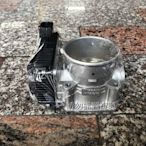搜尋結果
 $600線上汽材 泰國正廠 三點/引擎腳/前 SENERA QRV 2.5 其他車款歡迎詢問㊣《 線上汽材 》㊣
$600線上汽材 泰國正廠 三點/引擎腳/前 SENERA QRV 2.5 其他車款歡迎詢問㊣《 線上汽材 》㊣ $7500【酷熊】Triple S(TS)短彈簧NISSAN 裕隆日產 SERENA QRV 2.5 可搭配KYB Bilstein 避震器酷熊車改精品零件
$7500【酷熊】Triple S(TS)短彈簧NISSAN 裕隆日產 SERENA QRV 2.5 可搭配KYB Bilstein 避震器酷熊車改精品零件 $4500日產 SERENA QRV 2.5 整理新品 冷氣壓縮機遠享汽車材料行
$4500日產 SERENA QRV 2.5 整理新品 冷氣壓縮機遠享汽車材料行 $2000※明煒汽車材料※裕隆 X-Trail / TEANA 2.0 / QRV 2.5 / M1 2.0 日本件 啟動馬達專營發電機、啟動馬達店家
$2000※明煒汽車材料※裕隆 X-Trail / TEANA 2.0 / QRV 2.5 / M1 2.0 日本件 啟動馬達專營發電機、啟動馬達店家![日本 YEC NISSAN SERENA QRV 2.5 06 考耳 考爾 高壓線圈 點火線圈 點火放大器 歡迎詢問 日本 YEC NISSAN SERENA QRV 2.5 06 考耳 考爾 高壓線圈 點火線圈 點火放大器 歡迎詢問]() $800日本 YEC NISSAN SERENA QRV 2.5 06 考耳 考爾 高壓線圈 點火線圈 點火放大器 歡迎詢問輕鬆買汽車零件大賣場
$800日本 YEC NISSAN SERENA QRV 2.5 06 考耳 考爾 高壓線圈 點火線圈 點火放大器 歡迎詢問輕鬆買汽車零件大賣場![日產 Q-RV SERENA QRV 2.5 06- 熱水管(2號).冷卻水管.機油冷卻管 台製全新品 日產 Q-RV SERENA QRV 2.5 06- 熱水管(2號).冷卻水管.機油冷卻管 台製全新品]() $300日產 Q-RV SERENA QRV 2.5 06- 熱水管(2號).冷卻水管.機油冷卻管 台製全新品南中天汽車材料行
$300日產 Q-RV SERENA QRV 2.5 06- 熱水管(2號).冷卻水管.機油冷卻管 台製全新品南中天汽車材料行![TEANA 2.0 04-08,X-TRAIL 03-14 QRV 2.5 考耳.考爾.點火線圈.高壓線圈 TEANA 2.0 04-08,X-TRAIL 03-14 QRV 2.5 考耳.考爾.點火線圈.高壓線圈]() $1000TEANA 2.0 04-08,X-TRAIL 03-14 QRV 2.5 考耳.考爾.點火線圈.高壓線圈南中天汽車材料行
$1000TEANA 2.0 04-08,X-TRAIL 03-14 QRV 2.5 考耳.考爾.點火線圈.高壓線圈南中天汽車材料行![日產 SERENA QRV 2.5 XTRAIL 03-14 SENTRA 01-06 2.0 日本原廠 全新品 節氣門 日產 SERENA QRV 2.5 XTRAIL 03-14 SENTRA 01-06 2.0 日本原廠 全新品 節氣門]() $3000日產 SERENA QRV 2.5 XTRAIL 03-14 SENTRA 01-06 2.0 日本原廠 全新品 節氣門遠享汽車材料行
$3000日產 SERENA QRV 2.5 XTRAIL 03-14 SENTRA 01-06 2.0 日本原廠 全新品 節氣門遠享汽車材料行![【酷熊】Triple S(TS)短彈簧NISSAN 裕隆日產 SERENA QRV 2.5 可搭配KYB 倍適登 避震器 總成 【酷熊】Triple S(TS)短彈簧NISSAN 裕隆日產 SERENA QRV 2.5 可搭配KYB 倍適登 避震器 總成]() $7500【酷熊】Triple S(TS)短彈簧NISSAN 裕隆日產 SERENA QRV 2.5 可搭配KYB 倍適登 避震器 總成酷熊車改精品零件
$7500【酷熊】Triple S(TS)短彈簧NISSAN 裕隆日產 SERENA QRV 2.5 可搭配KYB 倍適登 避震器 總成酷熊車改精品零件![TSY NISSAN SERENA QRV 2.5 後燈內 尾燈內 倒車燈 LH 左邊 正廠 全新品 TSY NISSAN SERENA QRV 2.5 後燈內 尾燈內 倒車燈 LH 左邊 正廠 全新品]() $1000TSY NISSAN SERENA QRV 2.5 後燈內 尾燈內 倒車燈 LH 左邊 正廠 全新品Y0695303411
$1000TSY NISSAN SERENA QRV 2.5 後燈內 尾燈內 倒車燈 LH 左邊 正廠 全新品Y0695303411![日產 Q-RV SERENA QRV 2.5 06- 熱水管(1號).冷卻水管.機油冷卻管 台製全新品 日產 Q-RV SERENA QRV 2.5 06- 熱水管(1號).冷卻水管.機油冷卻管 台製全新品]() $300日產 Q-RV SERENA QRV 2.5 06- 熱水管(1號).冷卻水管.機油冷卻管 台製全新品南中天汽車材料行
$300日產 Q-RV SERENA QRV 2.5 06- 熱水管(1號).冷卻水管.機油冷卻管 台製全新品南中天汽車材料行![日產 QRV 2.5 X-TRAIL 06年後 全新 OEM正廠 加油踏板 感應器 日產 QRV 2.5 X-TRAIL 06年後 全新 OEM正廠 加油踏板 感應器]() $2500日產 QRV 2.5 X-TRAIL 06年後 全新 OEM正廠 加油踏板 感應器遠享汽車材料行
$2500日產 QRV 2.5 X-TRAIL 06年後 全新 OEM正廠 加油踏板 感應器遠享汽車材料行
External links. Nissan QR engine. The QR family of inline-four piston engines by Nissan were introduced in 2000 and range from 2.0 to 2.5 L (1,998 to 2,488 cc) in displacement. These motors are aluminum, dual overhead camshaft ( DOHC ), four-valve designs with variable valve timing and optional direct injection.
The Nissan Serena ( Japanese: 日産・セレナ, Hepburn: Nissan Serena) is a minivan manufactured by Nissan, joining the slightly larger Vanette. The car was engineered by Nissan's Aichi Manufacturing Division and launched in 1991 as a compact passenger van, and it grew larger with each generation over the years.
其他人也問了
What is a QR25DD engine?
What kind of engine does a yd QR20DE have?
How much power does a QR25DE make?
How much power does a QR20DE make?
v. t. e. Multicast Listener Discovery ( MLD) is a component of the Internet Protocol Version 6 (IPv6) suite. MLD is used by IPv6 routers for discovering multicast listeners on a directly attached link, much like Internet Group Management Protocol (IGMP) is used in IPv4. The protocol is embedded in ICMPv6 instead of using a separate protocol.
The Internet Group Management Protocol ( IGMP) is a communications protocol used by hosts and adjacent routers on IPv4 networks to establish multicast group memberships. IGMP is an integral part of IP multicast and allows the network to direct multicast transmissions only to hosts that have requested them.
Frequency bands for 5G New Radio (5G NR), which is the air interface or radio access technology of the 5G mobile networks, are separated into two different frequency ranges.
The Toyota RAV4 ( Japanese: トヨタ・RAV4, Hepburn: Toyota Ravufō) is a compact crossover SUV produced by the Japanese automobile manufacturer Toyota. It is known for starting the wave of compact crossovers. [1] It made its debut in Japan and Europe in 1994, [2] and in North America in 1995, being launched in January 1996. [3] .
Overview. As a RISC architecture, the RISC-V ISA is a load–store architecture. Its floating-point instructions use IEEE 754 floating-point.








